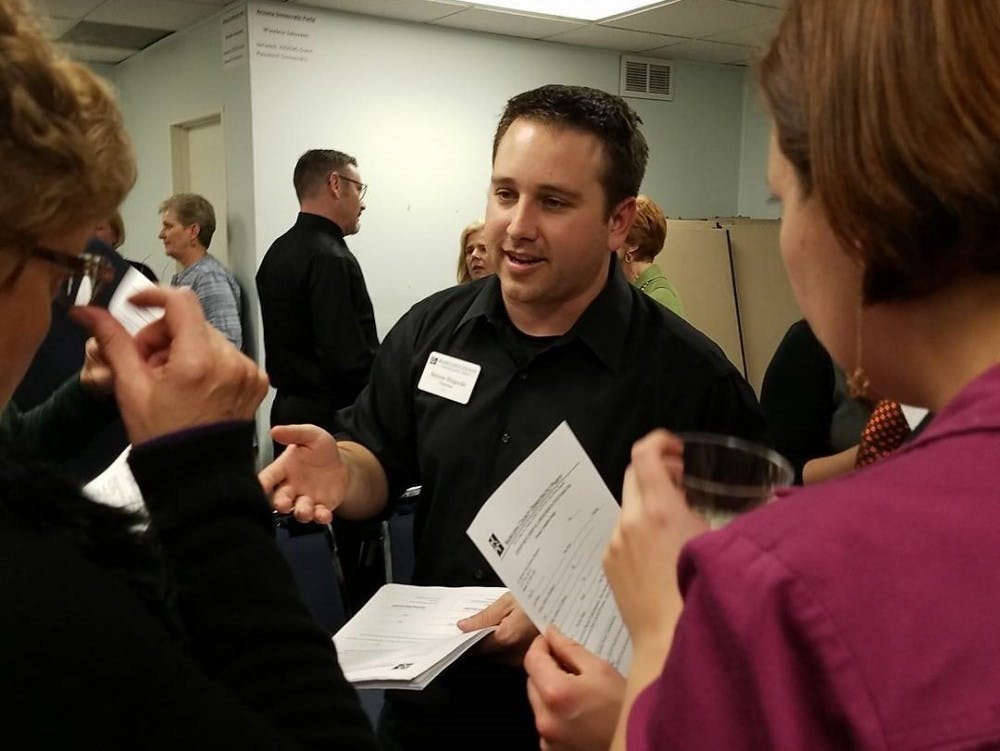Donald Trump has inspired massive levels of political participation, but the structure of the parties makes it difficult to channel the massive size of groups attending events like the Women’s March into students' best route to direct participation.
Most protests assembled since Donald Trump’s election have focused on blocking the passage of major Republican policy decisions, particularly when it comes to matters such as the executive order popularly known as the Muslim ban and the repeal of the Affordable Care Act.
While this kind of policy advocacy is useful and has large support — particularly evidenced by rowdy crowds following GOP members of congress around the nation — more specialized policy is coming out of fragmented efforts to rally around positive policies.
Groups like Indivisible, which was created solely to defend Obama’s legacy rather than produce anything new, will likely be unable to save specific science or arts policies which are worried to be up for grabs in the upcoming budgeting process. In that case, activists need to consider becoming part of the structures that are related to the policy-making process: the parties.
Party structure, however, is not something that is covered in high school civics classes.
Maricopa County Democratic Party Chairman Steven Slugocki explains that knowing about the most basic position in either party, called the precinct committee person, is about as well-advertised as Stephen Hawking’s party for time travelers.
“We’re constantly posting, asking for (precinct committee persons)…It really is word of mouth that everyone is getting involved," Slugocki said. "We’re seeing an explosion of (precinct committee persons) into the party.”
While he characterized that explosion as approximately 300 new precinct committee persons, these numbers are not reflected in the most recent data from the Maricopa County Recorder’s Office, which shows an increase of 108 Democratic precinct committee persons between Nov. 5th, 2016 and Feb. 4th, 2017.
This disconnect could come from the slow turnaround in filing the paperwork, but even the 300 Slugocki cites represent far less than the turnout of recent protests.
Create bar charts
Precinct committee persons matter. As the most base level of each party, they are responsible for turning out the vote, knowing their neighborhoods and, during policy season, voting on where the party plans to go in the near term.
Because most undergraduates are too young to run for state or national office, ASU students, in particular, are able to use this to make their mark on the political process now.
Just under half of the 7,870 precinct committee person positions in the State of Arizona, however, sit unfilled, meaning that all anyone has to do to gain a voice in party policy, Republican or Democrat, is fill out paperwork and turn it into their legislative district chair.
While both parties claim that enrolling precinct chairs is difficult, the sheer number of persons interested in getting involved in politics suggests that there should be more than 300 people enrolling as precinct committee persons for at least the Maricopa County Democratic Party. The Maricopa County Republican Party in the same time period has lost 35 precinct chairs.
Perhaps the parties need to target larger events that are seemingly unrelated.
The Maricopa County Democratic Party is working on outreach efforts, having advertised the position to ASU’s Young Democrats as well as visiting the recent Arizona Gay Rodeo.
To fully take advantage of the amount of interest, however, these efforts must be sustained and those wanting to truly resist need to get involved.
The party and protesters might not always see eye-to-eye, but political parties offer the best access to change that protesters can hope for.
Reach the columnist at benjamin.steele@asu.edu or follow @blsteele17 on Twitter.
Editor’s note: The opinions presented in this column are the author’s and do not imply any endorsement from The State Press or its editors.
Want to join the conversation? Send an email to opiniondesk.statepress@gmail.com. Keep letters under 300 words and be sure to include your university affiliation. Anonymity will not be granted.
Like The State Press on Facebook and follow @statepress on Twitter.




